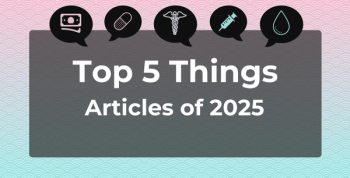
Findings Suggest Potential Link Between Overactive Bladder, Osteoarthritis
Key Takeaways
- Osteoarthritis patients may have a higher risk of developing overactive bladder compared to those without arthritis.
- The study utilized NHANES data from 2005 to 2020, analyzing 24,436 participants to explore the arthritis-OAB link.
A positive association was found between osteoarthritis and overactive bladder (OAB), but rheumatoid arthritis and psoriatic arthritis were not significantly correlated with the condition.
Patients with
OAB
One study
To do so, they used data from the National Health and Nutrition Examination Survey (NHANES), spanning 2005 to 2020. NHANES examines the health status and behaviors of the non-institutionalized US population.
The researchers used participant answers from NHANES to diagnose and classify arthritis. Conversely, they used the OAB Symptom Score to diagnose OAB. The total score was calculated by adding those for urinary urgency, incontinence, and nocturia. Those with a total score of 3 or more were considered to have OAB.
The researchers used weighted logistic regression to evaluate the correlation between OAB and arthritis. They also performed subgroup analyses to ensure the robustness of their findings.
The NHANES database included 24,436 eligible participants, of whom 3975 were diagnosed with OAB. Among the study population, the mean (SD) age was 44.89 (0.24) years, 52.12% were male, and 18.07% had arthritis. Most patients with arthritis had osteoarthritis, followed by rheumatoid arthritis, other types, and psoriatic arthritis. Arthritis was significantly more prevalent in patients with OAB than those without OAB (35.37% vs 15.64%; P < .0001).
The weighted logistic regression analysis found a positive correlation between arthritis and OAB. In the unadjusted model, patients with arthritis have a 1.95 times higher risk of OAB than those without arthritis (OR, 2.95; 95% CI, 2.69-3.24). After correcting for all covariates, the connection remained significant (OR, 1.37; 95% CI, 1.22-1.54).
When stratified by arthritis type, there was a positive association between osteoarthritis and OAB (OR, 1.40; 95% CI, 1.22-1.62). Conversely, rheumatoid arthritis (OR, 1.20; 95% CI, 0.99-1.46) and psoriatic arthritis (OR, 1.40; 95% CI, 0.75-2.60) were not significantly correlated with OAB.
Lastly, the subgroup analyses demonstrated that the positive association between arthritis and OAB remained stable when stratified by various factors. These included sex, age, race, education level, marital status, smoking status, drinking status, hypertension, diabetes, body mass index, and poverty income ratio (P > .05 for all subgroups).
The researchers acknowledged their study’s limitations, including its cross-sectional design, which prevents establishing a causal relationship between OAB and arthritis. Also, since NHANES data is US-specific, the findings may have limited generalizability to other populations. Despite these limitations, the researchers proposed future treatment and research directions based on their findings.
“…urologists should assess the musculoskeletal status of patients with OAB during diagnosis and treatment,” the authors concluded. “Further large-scale prospective studies are needed to confirm these findings.”
References
- Sun Y, Sheng J, Wang K, Feng N. New insights into the association between arthritis and overactive bladder in NHANES 2005-2020. Sci Rep. 2025;15(1):5310. Published 2025 Feb 13. doi:10.1038/s41598-025-89926-w
- Raju R, Linder BJ. Evaluation and treatment of overactive bladder in women. Mayo Clinic Proceedings. 2020;95(2):370-377. doi:10.1016/j.mayocp.2019.11.024
- Hootman JM, Helmick CG, Barbour KE, Theis KA, Boring MA. Updated projected prevalence of self-reported doctor-diagnosed arthritis and arthritis-attributable activity limitation among US adults, 2015-2040. Arthritis Rheumatol. 2016;68(7):1582-1587. doi:10.1002/art.39692
- Turner-Stokes L, Frank AO. Urinary incontinence among patients with arthritis--a neglected disability. J R Soc Med. 1992;85(7):389-393.
Newsletter
Stay ahead of policy, cost, and value—subscribe to AJMC for expert insights at the intersection of clinical care and health economics.







































